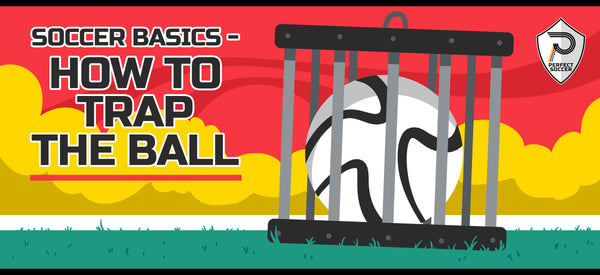Soccer Basics - How to Trap the Ball
Soccer Basics - How to Trap the Ball
Trapping the ball is an essential part of soccer, which means that every soccer player should learn to do it correctly. Most coaches preach possession since more possession usually means more wins, and trapping allows you to retain possession for your team.
Learning to trap the ball correctly will help many other parts of your game, including dribbling and passing. Just watch any of the best dribblers in the world and you will see that trapping is a huge reason why they are considered the best.
Types of Soccer Traps
It may seem like there hundreds of ways to trap a soccer ball, but in reality, there are only five that you need to know:
- Step Trap – Simply step on the ball to trap it.
- Inside Trap – Stop the ball with the side of your foot.
- Thigh Trap – Use your thigh to trap the ball when the ball is lower than your chest but too high for your foot.
- Chest Trap – Use your chest to cushion the ball down to your feet.
- Head Trap – Similar to the chest trap, but you use your head to knock the ball down to your feet.
Trapping a Ground Pass
When you are receiving a ground pass, you will want to use the inside trap so you can increase the chances of pushing the ball out in front of you. Ground passes are the easiest to trap in most situations, and they allow players to make multiple one-touch passes when they are moving the ball up the field.
Trapping an Aerial Pass
The type of soccer trap to use when receiving an aerial pass depends on the height and speed of the ball, which is why it is important to practice every type of trap. Your overall goal is to get the ball to your feet so you can control it, so use any (legal) part of your body to cushion the ball down when it is coming to you through the air.
Trapping a Bouncing Pass
Bouncing passes can be very tricky to trap, but sticking with the fundamentals of trapping makes it much easier. In most situations, it will be easiest to stop a bouncing pass with an inside trap since you have more control over where the ball will end up and there is a lower chance of it getting past you. Check out these 5 players who have mastered the art of Dribbling.
Keeping the Ball Close
It isn’t too hard to make contact with a pass that comes to you, but it can take some time to make it stick near you. Your overall goal when trapping is to make sure that you can do something with the ball as quickly as possible. Having to put too much focus on retaining possession can lead to miskicks and turnovers.
One of the easiest ways to get used to trapping the ball close to you is to pretend that you have a loop around you that is three feet in diameter. If you work on never allowing the ball to go outside of that loop when you are trapping the ball, then you will have a much higher chance of successfully completing the trap.
Trapping the Ball in Open Space
The most important thing to keep in mind when you trap the ball in space is to get your body facing towards the opponent’s goal as quickly as possible. Since you are not under pressure, you have more time to back up and get the ball to your feet, but you should try to trap it in one touch into open space.
Even though trapping the ball in open space is easier than when you have a defender close to you, it is vital that you trap the ball as quickly as possible. That way you get more time on the ball and you up your team’s chances of having a successful possession.
Trapping the Ball While Under Pressure
When there is pressure on you, you want your first touch to push the ball away from the defender. No matter what type of trap you use, aim the ball so that your body is between the ball and the defender, and so you have a higher chance of either dribbling around them or completing the next pass. Keep your composure with the ball at your feet and you will have a high chance of getting away from the defender.
Mastering the Trap
Trapping the ball is one of the most important skills in soccer, so it is something that every player should continue to work on no matter how experienced they are. A good idea is to train with smaller soccer balls to make the standard balls easier to trap. When you master the basic traps, you will find that you the game slows down and you will become a much more composed soccer player.



